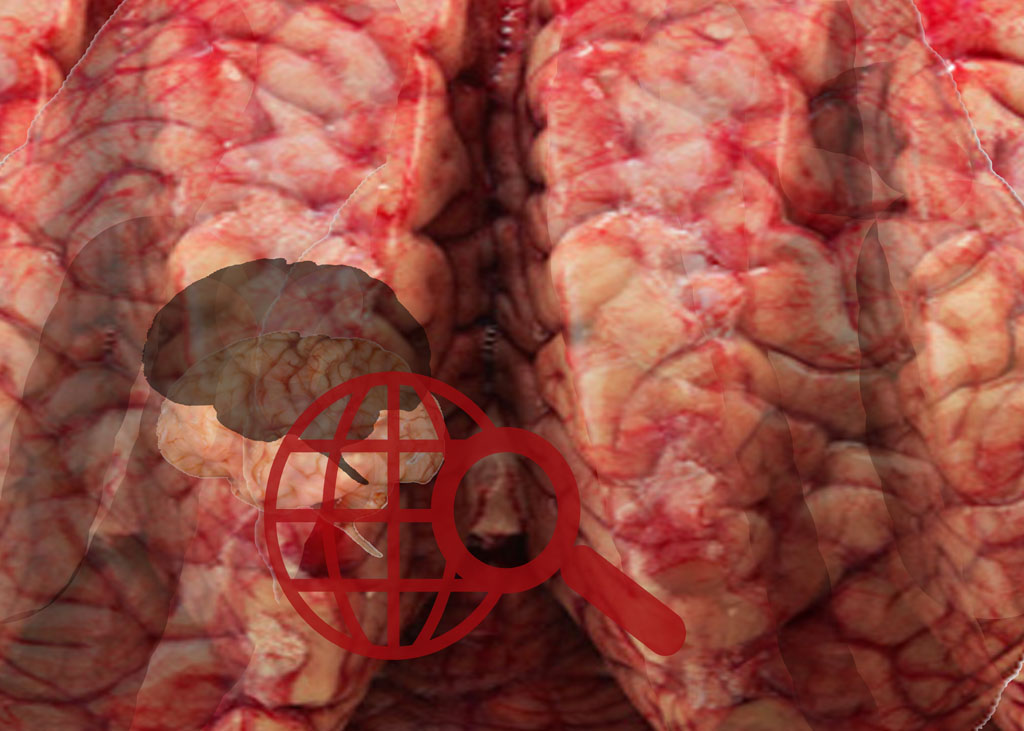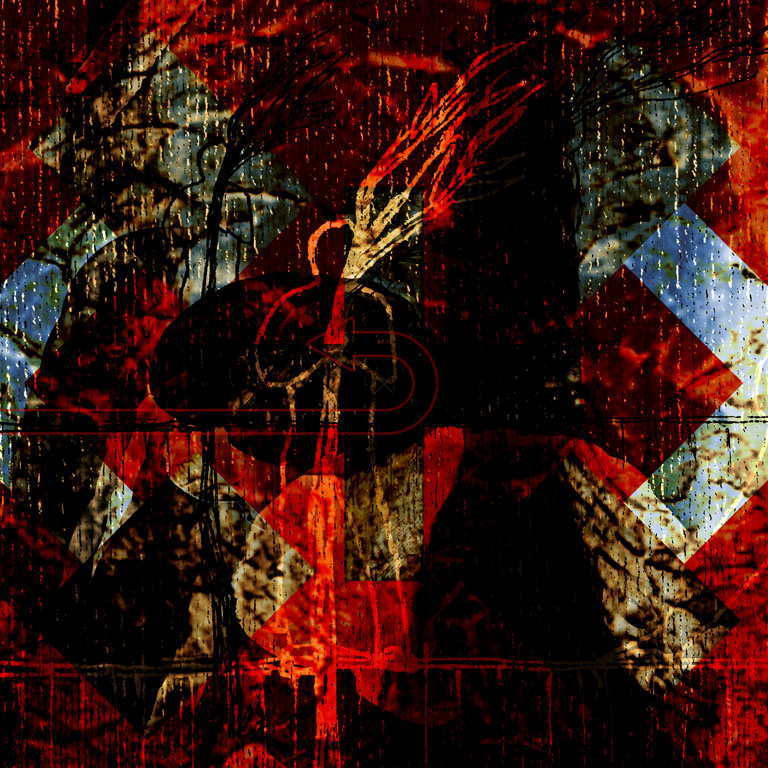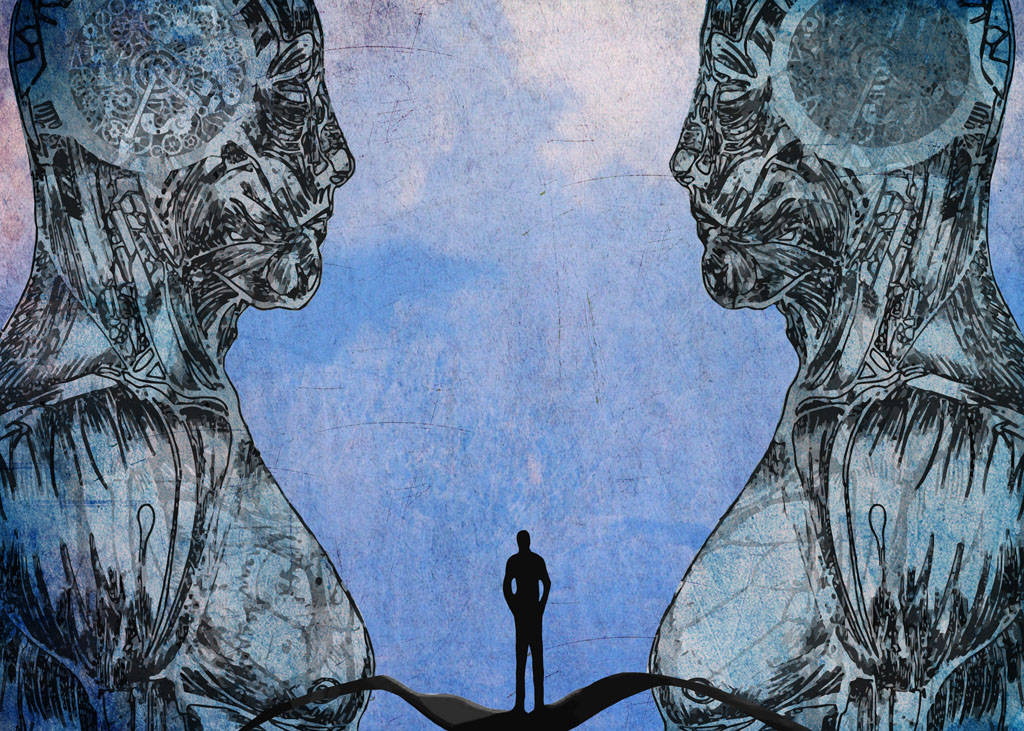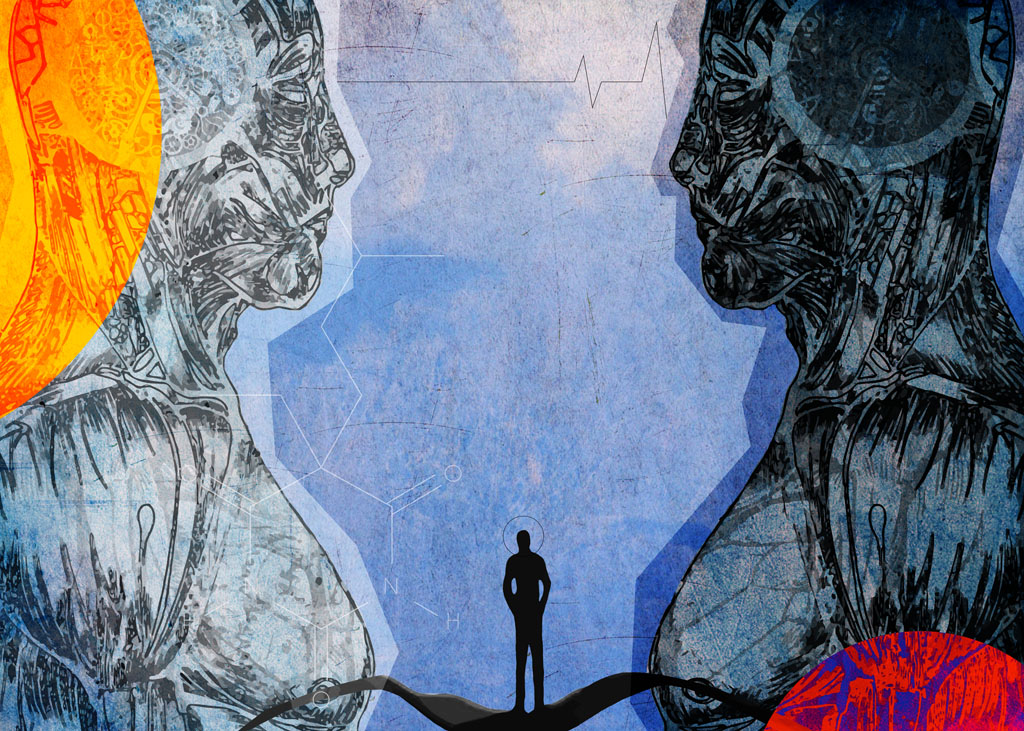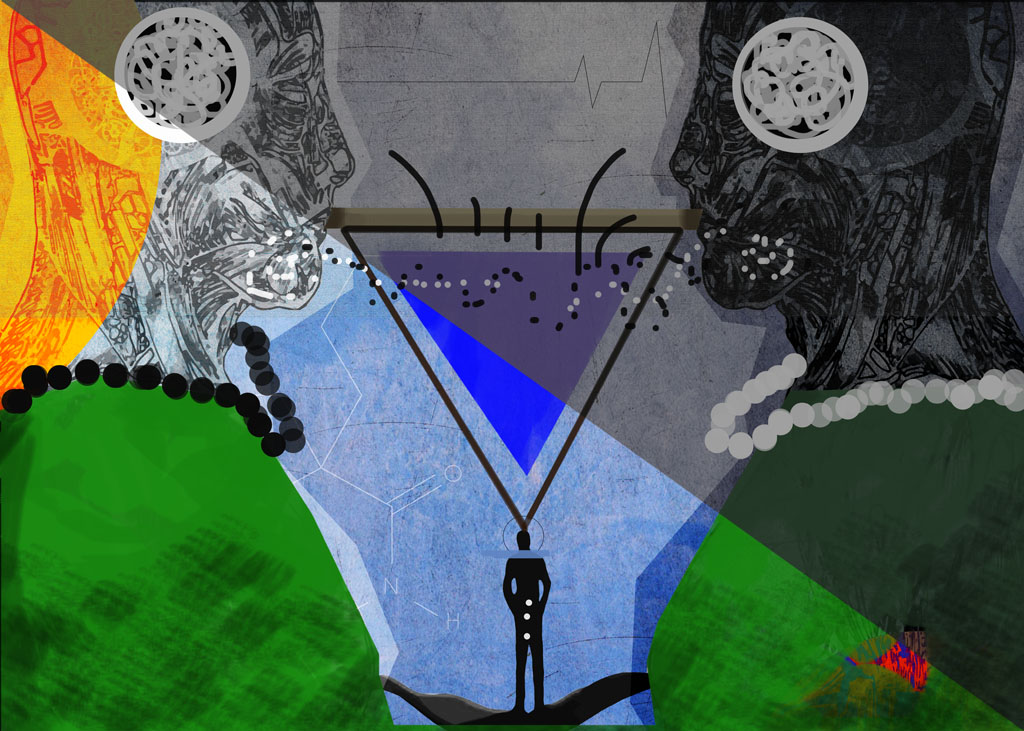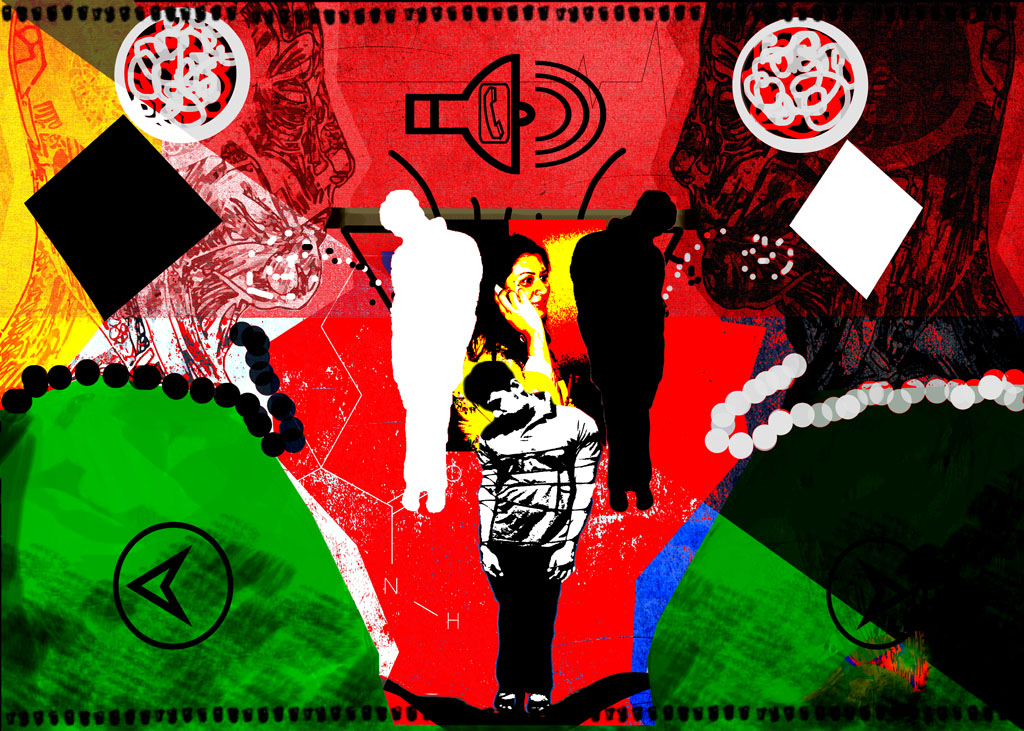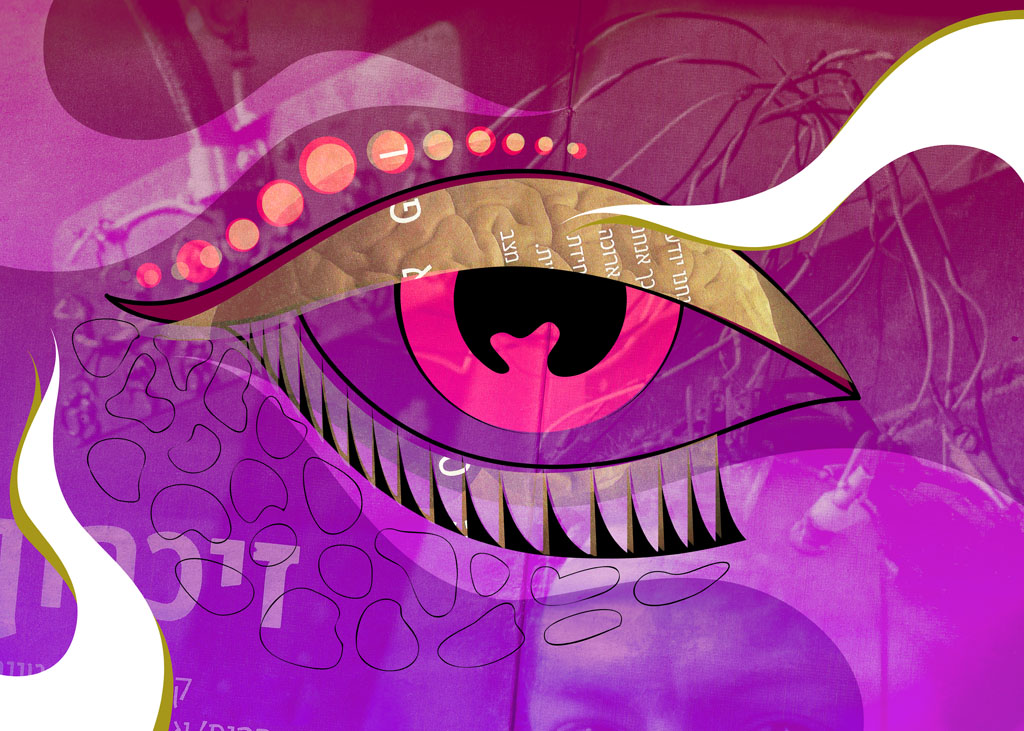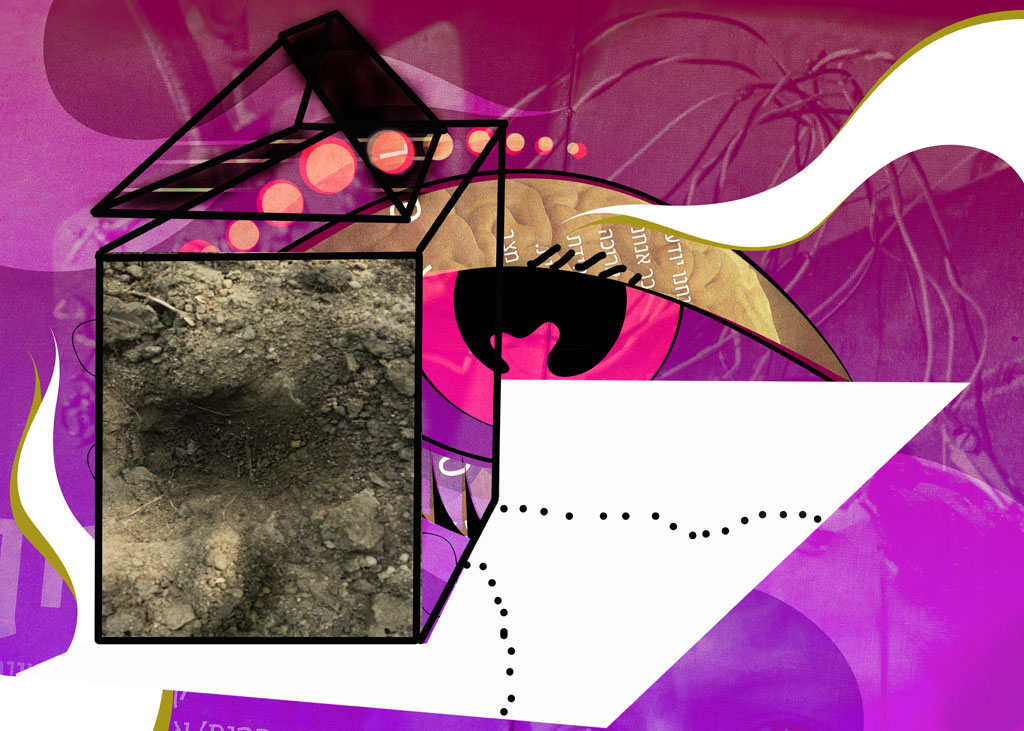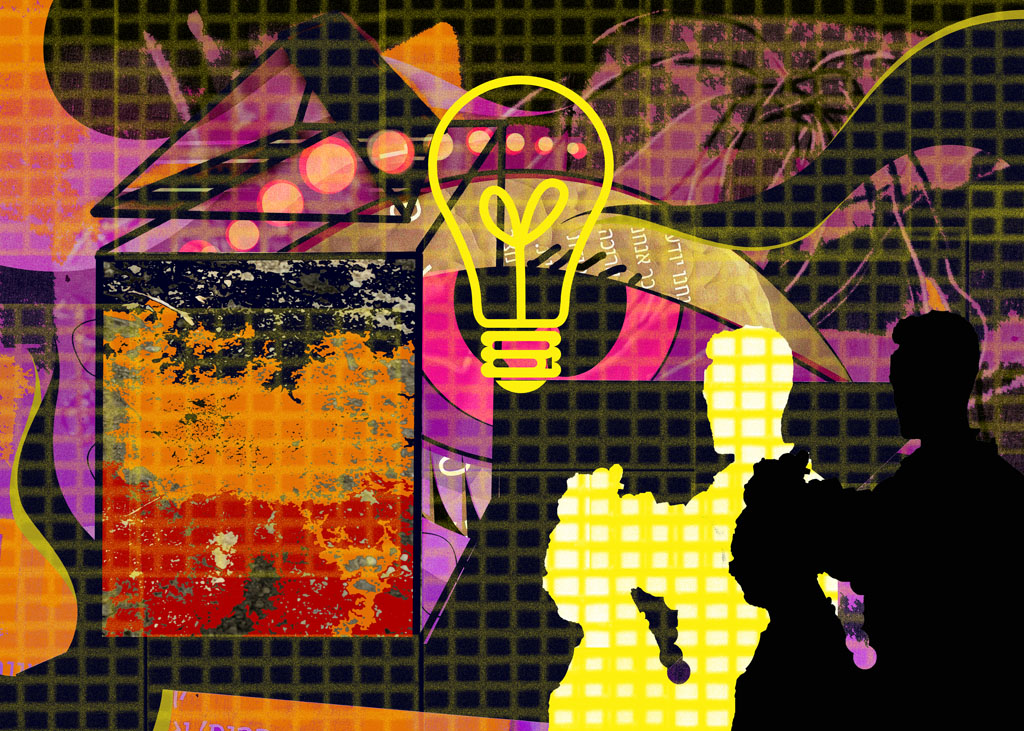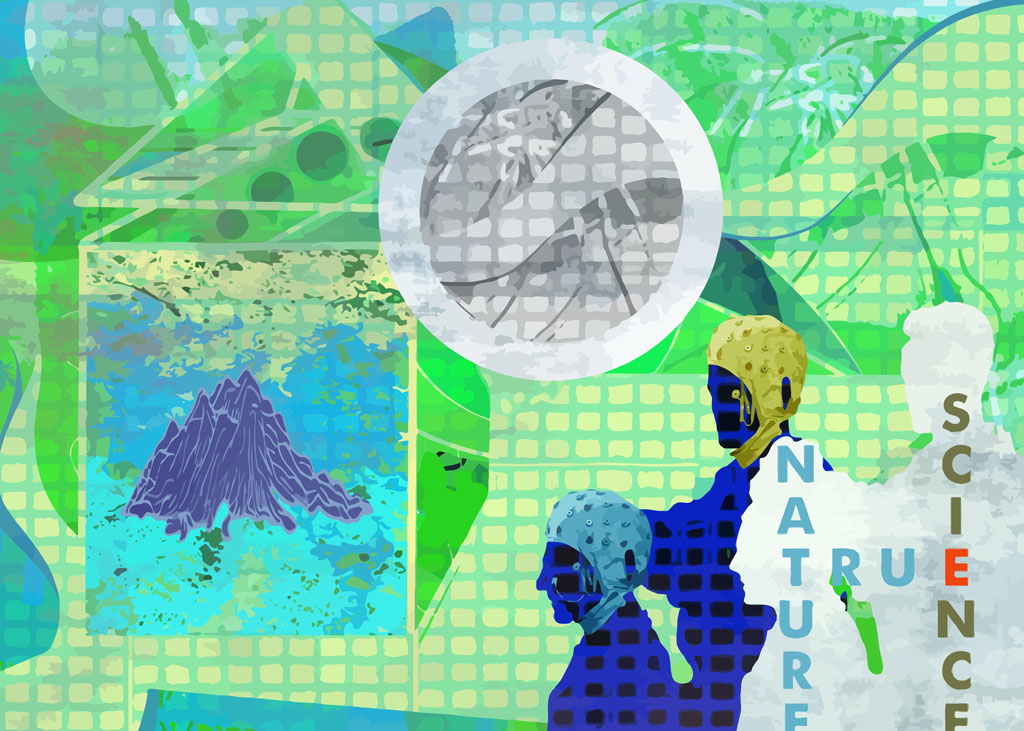Scribble It Down 2015: The Artists’ Laboratory
The third edition of the online exhibition series "Scribble It Down," curated by Einat Moglad, Tel Aviv, Israel.
About Scribble It Down
Scribble it Down, founded by Einat Moglad in 2013, is an international, digital collaboration. Through a sequential process artists from around the world work together to create communal works of art. Each artist contributes to a digital file, then transfers the work to the next, until each artists in the group has contributed to each piece. This process allows artists to bring together diverse backgrounds and perspectives. "Scribble It Down" thus becomes a platform for communication and dialogue that encourages tolerance and understanding between different cultures, traditions, and points of view. The project raises questions about our place in society, our work in relation to others, and how we can give and inspire. View past Scribble It Down editions here.
Scribble It Down 2015: The Artists Laboratory
by Einat Moglad
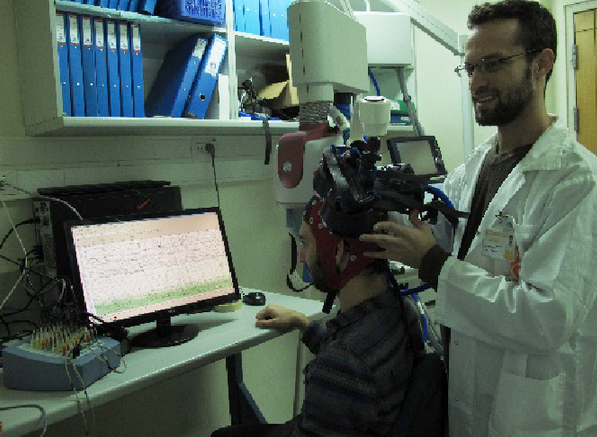
This year Scribble it Down edition was done in collaboration with BenGurion University (Beersheba, Israel) and RedLine Residency (Beersheba, Israel). It focused on the creation of art that addresses the relationship between art and science. The collaboration also included the participation of researcher Aviad Hadar, from Ben Gurion University, accompanying the Scribble it Down artists. Aviad joined the Scribble it Down group on Facebook and continuously updated the group on his findings and progress. His presence in the project meshed well with the ongoing methodology of collaboration and mutual contributions in Scribble it Down projects. Scribble it Down also conducted an online interview with Aviad Hadar, discussing his views on the relationship between science and art, and engaging him with the artists and their interpretations of his work. During the conversation, his fellow Scribblers asked him questions live. No small feat, since the Scribble it Down artists were around the globe, with differing time zones. See the interview here.
Science and Art
The relationship between science and art is a long and influential one, a relationship that has lasted since the beginning of civilization when cave men continuously experimented with different materials to document their survival story. Early men and women were using both scientific and artistic processes through this endeavor. During the Renaissance artists were also scientists and vice versa. As mankind became more knowledgeable, enough was gathered in each field allowing for further specialization and separation of these two worlds. Each became a whole world onto itself. Art and science went on their separate ways.
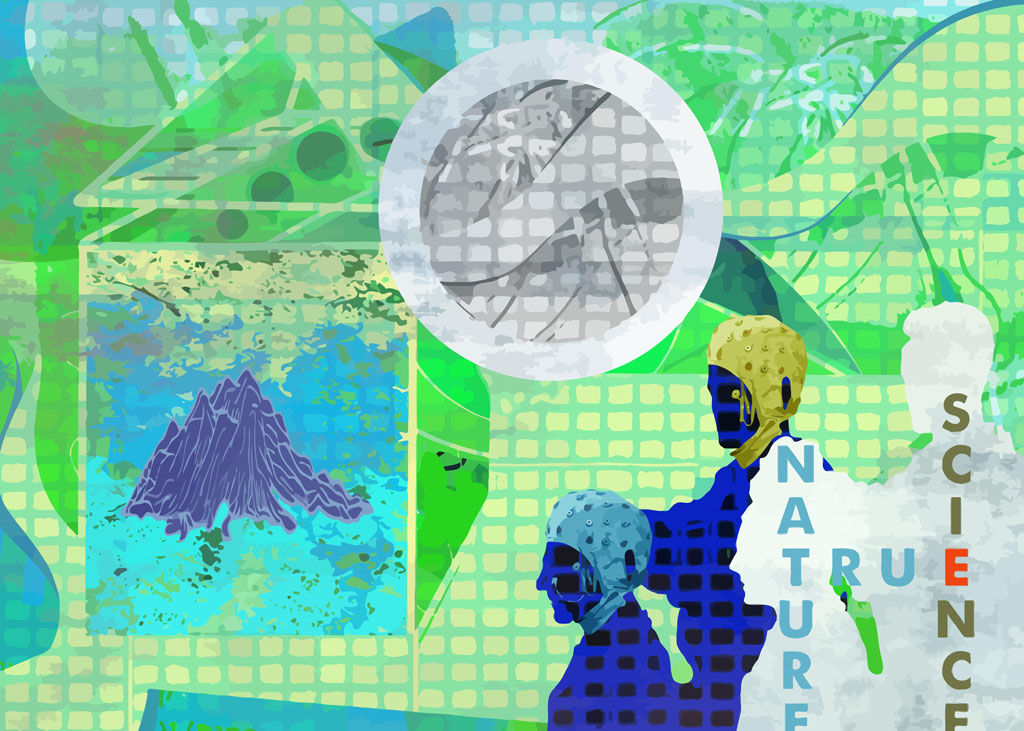
Still, scientific advancements have always affected art and generated new methods of expression. Scribble it Down itself utilises new technologies as tools to create a broad range of artworks. This year's Scribble it Down attempted to generate a dialogue between the scientist's laboratory and the artist's studio by turning the science lab into an open arena that the artist can observe and be inspired by. The scientific experience is mostly focused on details and a 'narrow view,' as Aviad Hadar described it (see interview), since the scientist attempts to examine and separate a specific element from our daily lives.
Smartphones
The process continued as Aviad delved deeper and deeper into his current research about “the effect of heavy use of smartphones on our brains.” He was trying to answer his very specific question and share his process while the artists continuously questioned themselves on the ways inventions affect our society and lives. The artists asked questions about the scientific research, but from a different view. The artists wondered about the ways smartphones affect our society, observing the social repercussions of these effects (See Marco- Ronney Leigh - Jayeti- Madeeha process) to create a larger image of the heavy use of smartphones in our everyday lives. (See Madeeha’s link about the repercussions of smartphone users). While each field, art and science, is self-sustaining and may be viewed as separate from the other, combining the artistic and scientific processes may help to shed more light on our world and the human experience. We can clearly see how artists can add questions that are also ethical, moral and social regarding the effect of scientific experiments on a broader scale.

The Brain
As the process progressed, the brain became the focus of both the Scribblers and the scientific procedure. It became an image, texture, or theme that was placed at the forefront of the different artworks. The brain in the Scribblers process became a material, an object and a bodily feature. The brain isn’t the mind and it isn’t the actual functioning brain. The brain image in this year's Scribble it Down is a symbol all on its own. It is a subliminal image that finds you and lurks after you in different places of the artwork. The brain is a key for the Scribblers, reminding each other and the viewer what this process revolves around. The brain and the mind are like thoughts that connect us all through images.
About Aviad Hadar, Neuroscientist at Ben Gurion University
Aviad completed his PhD in London City University in 2012 focusing on the use of Transcranial Magnetic Stimulation (TMS) for lie detection. He is currently directing a new research project about technological addictions at the Brain Stimulation and Behavior Lab at Ben Gurion University, Israel. In a recent study he has found that intensive usage of smartphones may result in lasting behavioral and neural changes measured by a combination of TMS and electroencephalogram (EEG). Aviad is a great admirer of the arts. He participates regularly in discussions with local artists in Be'er Sheva and is planning a shared arts and neuroscience exhibition.
Scribble It Down 2015 Participating Artists:
Madeeha Iqbai (Pakistan) | Marco Gavrilovic (Serbia) | Ronney Leigh Dobnov Raz (USA/Israel) | Jayeti Bhattacharya (India)
MADEEHA > MARCO > RONEY LEIGH > JAYETI
CLICK TO ENLARGE IMAGES
FROM LEFT TO RIGHT: MADEEHA > Marco > RONEY LEIGH > JAYETI
Image 1: "When I got the first blank file my mind was influenced by Aviad's research about 'the truth-telling motor cortex' so I used brain images." -Madeeha Iqbai
Marco > Roney Leigh > Jayeti > Madeeha
CLICK TO ENLARGE IMAGES
From Left To Right: Marco > Roney Leigh > Jayeti > Madeeha
Image 1: "This image is called “Between Truth and Lies.” Two men, one is a liar the other is a truth teller, but the question is who got this right. Who will measure this tiny line? The small man in between is measuring this...or does he just think that he is in control?" -Marco Gavrilovic Image 3: "It is about the connection between the known and unknown––probably the most important part of our project." -Jayeti Bhattacharya image 4: "When I got this file, Marco, Roney Leigh, and Jayeti had already worked on it. I added my own photography of a woman talking on a smartphone and a man tied up with rope, to try to show the positive and negative effects of smartphones." -Madeeha Iqbai
Roney Leigh > Jayeti > Madeeha > Marco
CLICK TO ENLARGE IMAGES
FROM LEFT TO RIGHT: RONEY LEIGH > JAYETI > MADEEHA > MARCO
Image 3 "When I got this file, Roney Leigh and Jayeti had already worked on it. Aviad shared one of his lab images with us and I just loved that image, so I used it in this file with one symbol, and changed the box to the color of mud to represent the scientist trying to find out the exact reactions in a human’s mind." -Madeeha Iqba Image 4: "This image is called “Science through Nature.” I made two simple faces. One is Aviad’s the other is mine. Aviad represents science and I represent nature. But he is not experimenting only on me. I’m also doing an experiment on him too. So who is the wise guy here? The volcano in the background is having an eruption because we are not doing everything right in our world today, even if we have noble causes." -Marco Gavrilovic
Jayeti > Madeeha > Marco > Roney Leigh
CLICK TO ENLARGE Images
FROM LEFT TO RIGHT: JAYETI > MADEEHA > MARCO > RONEY LEIGH
Image 1: (Image 1 combines an image taken from Aviad Hadar's lab with Jayeti's artwork) "When i saw the structure of the head, the first thought that came to me was 'why can't we preserve our memory and thoughts as they fly away from our mind...' in this way this image came to me." -Jayeti Bhattacharya
Image 3: "This image is called “The Scientist Left”? At this stage of the work I was thinking that Aviad left us, as he had some problems with his experiments. But we invested some time in this project so I had to provoke a little. Since I’m an independent artist, I’m not used to have a person guide me through the process and having to wait for the results. That is why 'scientist left...' Is this a question or an answer? The moon is here, but still we don’t have a day. We have trees, but still with no leaves (no results), we have a scientist but maybe we don’t. "-Marco Gavrilovic
Image 4: "In this round, i got this beautiful image that seemed like a deep story with perfect composition - instead of tampering with it, I preferred to just give it the respect it deserves, as a project that has reached its final step and is now displayed nicely, for all to see - much like what I fear is happening with human brains; I think we reached the peak, with development and abilities - from this point on it'll be *devolution*, because of the overuse of technology. I feel we don't use it to help us - we use it to replace us. The people are running away––from thinking, from responsibility, from calculating, from navigating... So, better to freeze this moment in time––frame it, hang it on the wall for the world to see, because it might not get better than this. So, it's a series of 2 images, hung side by side on a random domestic wall, sometime in the near future." –Ronney Leigh Dobnov Raz
These images are currently inspiring young musicians to write sound pieces following the collaborative pattern.
Soon on these pages, stay tuned!
Participants' feedback:
“Working with people without knowing them in the physical space is really wonderful because all the reflection of personality is through works of art” -Jayeti Battecharya “It’s great being in Scribble it Down, especially when I see the final results from each stage – you can really feel the power of collaboration. I think none of us alone would’ve reached such a rich image, so eclectic yet harmonic. It definitely can only happen with a combination of several different minds / perspectives / talents / inspirations." -Roney Leigh Dobnov Raz
About the Participants:
Einat Moglad
Einat Moglad is a contemporary Israeli artist. She completed a B.A. in Arts and Education cum laude from Hamidrasha Beit-Berl College for Fine Arts in 2011, and a Master's degree in Art Therapy from the Haifa University. Einat has displayed her works in exhibitions and residencies both local and abroad. She is active in the local Israeli art scene as a partner at IArtists organisation. Einat is the curator and founder of the international "Scribble it Down" project, supported by the Emergent Art Space from which she has received a grant for “Best Project” in 2014.
Ronney Leigh Dobnov Raz
Ronney Leigh Dobnov Raz studied Interior Design. During her college years she went to Köln, Germany on a student-exchange program, and discovered her real talent, which is befriending the whole world. She also enjoys sewing, knitting, doodling, and watching shallow movies.
Madeeha Iqbal
Madeeha Iqbal is a young practicing visual artist. She has graduated in Visual Arts with A grade from the Institute of Design and Visual Arts, Lahore College for Women, University of Lahore, Pakistan, in 2012. She then joined the National College of Arts and obtained a Professional Diploma in Calligraphy in 2013. She is currently pursuing a M.A HONS in Visual Arts from the National College of Arts. Her work was written about on Guerrilla Art, and is featured on Emergent Art Space.
Jayeti Bhattacharya
Jayeti Bhattacharya received a BA from the Indian College of Arts and Draftsman ship and an MA from Kala Bhavan (Institute of Fine Arts). She is represented by Aakritj Art Gallery and has participated in several group exhibitions. She contributed to Scribble It Down 2014, ‘Parallel Lives’, and her work is featured on Emergent Art Space.
Marco Gavrilovic
Marco Gavrilovic was born in Belgrade, Serbia. After graduating at the Academy of Applied Arts he started to pursue his career exploring the secrets of drawing and painting. He exhibited locally as well as internationally and at the moment he is especially devoted to his latest light sculptures made from Plexiglas. I am happy to be part of the Scribble it Down project. This opportunity has given me the chance to work and collaborate with other international artists on a single digital art piece.
PAST SCRIBBLE IT DOWN EDITIONS HERE
These images are currently inspiring young musicians to write sound pieces following the collaborative pattern.
Stay tuned!

